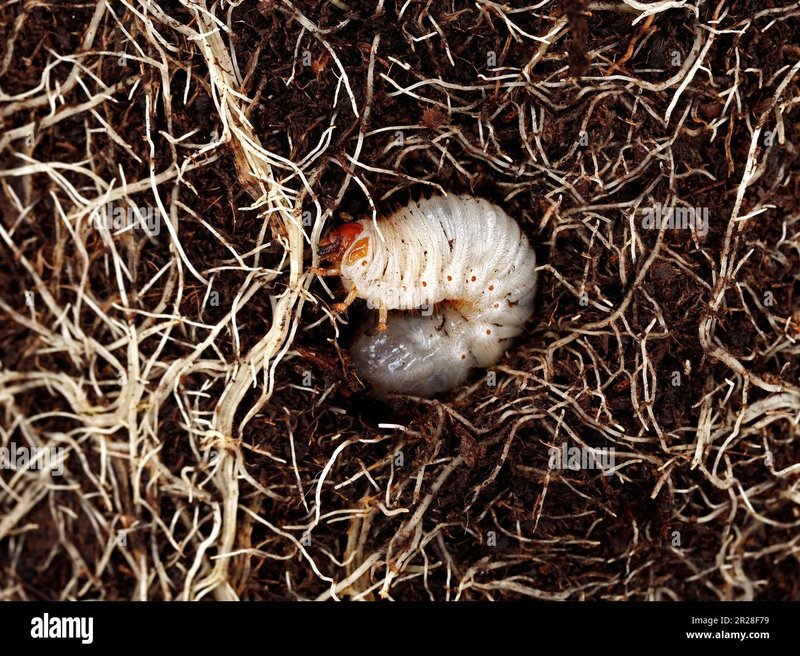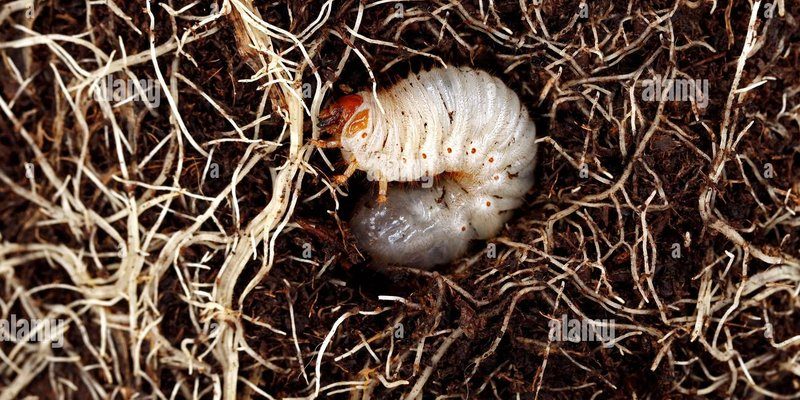
Understanding where grub worms hang out is important, especially if you’re gardening or managing a lawn. After all, if you know their depth, you can better address any issues they might cause. So, let’s dig in—pun intended—and explore the underground world of these wriggling wonders.
What Are Grub Worms?
Before we dive into how deep grub worms go, it’s helpful to know what they actually are. Grub worms are the larval stage of certain beetles. These little guys are usually plump and white, with soft bodies that often curl into a C-shape. You might spot them in your garden or lawn during the warmer months. They thrive on organic matter, feeding on the roots of grass and other plants, which is why they can be a gardener’s nightmare!
Grub worms play a vital role in the ecosystem, even if they aren’t the most popular guests at your garden party. They help break down organic material, returning nutrients to the soil and promoting healthier plant growth. However, their appetite can lead to serious damage if they’re in large numbers.
How Deep Do Grub Worms Typically Live?
So, just how deep do grub worms live in the soil? Generally, grub worms tend to stay within the upper **6 to 8 inches** of soil. This depth is where they can easily find food and stay safe from predators. In the spring and summer months, when they’re actively feeding, they might be found even closer to the surface.
During the colder months, grub worms often burrow deeper, sometimes reaching depths of up to **12 inches**. This behavior helps them escape freezing temperatures and stay out of harm’s way. You might be wondering how this impacts your garden—well, if they’re too deep down, they might not cause immediate damage, but come spring, they’ll rise again and resume their feasting.
Factors Influencing Grub Worm Depth
Several factors affect how deep grub worms live in the soil. Let’s break down a few of the main ones:
- Temperature: Grub worms prefer warmer conditions. As temperatures rise, they tend to move closer to the surface to feed.
- Moisture Levels: Soil that’s moist and easy to dig into can significantly impact their depth. Grubs will stay where they can find the best food and moisture.
- Soil Composition: Sandy soil might allow for easier burrowing, while clay soil can be denser and might force them deeper.
These factors can vary greatly by region and season, which is why grub depth isn’t a one-size-fits-all answer. For example, if you live in a warmer climate, you might find them closer to the surface for a more extended period than if you were in a cooler area.
How to Detect Grub Worms in Your Garden
Now that you know about their depth, let’s talk about how to detect grub worms in your garden. Finding these belly-scratching pests early can save you a lot of headaches later. Here’s what you can do:
1. **Look for Brown Patches:** If you notice areas of your lawn that are brown and dying while the rest is green, you might have a grub problem. These patches indicate that grass roots are being eaten away.
2. **Lift a Section of Grass:** Gently pull back a small patch of grass. If you see *grub worms* wriggling around just beneath the surface, you’ve found the culprits.
3. **Check the Count:** A few grubs might not cause too much trouble, but if you find more than 10 grubs per square foot, it might be time to take action.
It’s worth noting that not every garden will have a grub worm problem. Environmental factors play a significant role in their population.
Treating and Managing Grub Worms
If you discover that grub worms are taking over your garden, don’t panic! There are several methods to manage their population:
- Beneficial Nematodes: These tiny, parasitic worms can be a game-changer. They seek out and kill grub worms while being harmless to your plants.
- Chemical Treatments: There are pesticides specifically designed for grubs. However, be careful with these, as they can impact beneficial insects too.
- Natural Remedies: Some gardeners swear by organic solutions like diatomaceous earth, which can help control grub populations.
Always remember to read labels and follow instructions when using any treatment. It’s crucial to protect your garden while also maintaining a healthy ecosystem.
Understanding how deep grub worms live in the soil is essential for any gardener or homeowner. By knowing their habits and depths, you can better manage their populations and protect your plants. Whether you opt for natural solutions or a more commercial approach, keeping these pests in check can lead to a thriving garden.
So next time you’re out in your yard, take a moment to appreciate the world beneath the soil. With a little knowledge and care, you can maintain a healthy balance between nature’s helpers and harmful pests. Happy gardening!

